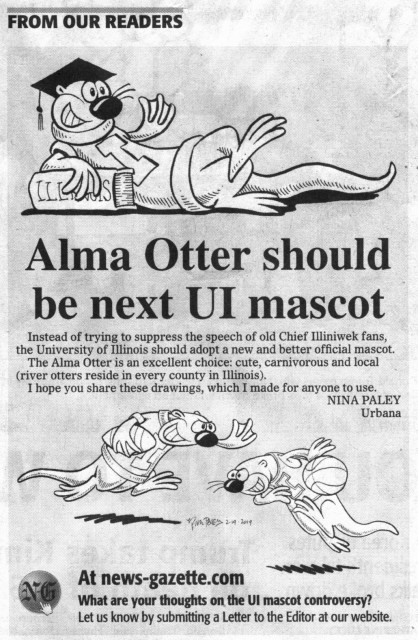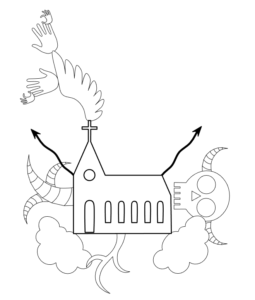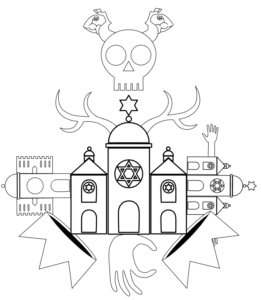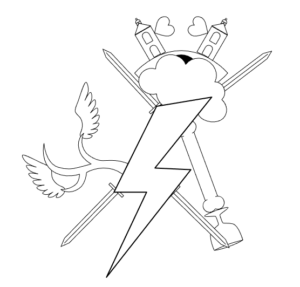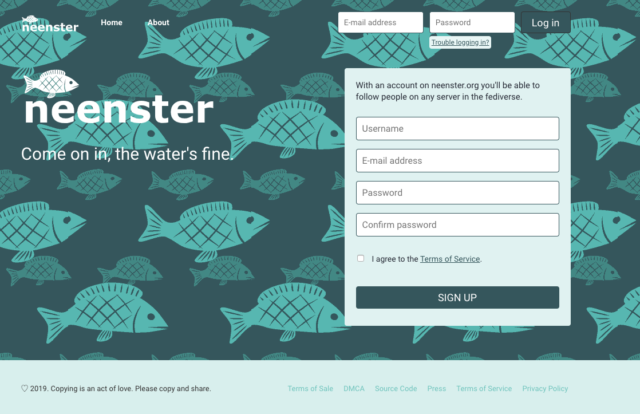
The University of Illinois hasn’t had an official mascot since 2007, when they retired “Chief Illiniwek.” Like many people I despised that mascot and consider it racist. However, I despise attacks on Free Speech even more. The University is in a bind right now, because when they eliminated the “Chief,” they failed to replace it with a new mascot. Consequently many U of I sportsball fans and alumni continue to “support the Chief” while the U of I misuses trademark law in weak attempts to stop them, mostly for virtue-signal points. This article in the local rag today got me thinking (text below, until I receive a copyright threat):
Pro-Chief group plans event for Saturday’s game
CHAMPAIGN — As the University of Illinois weighs how best to move beyond Chief Illiniwek, a pro-Chief group has organized another “Paint the Hall Chief!” event for Saturday’s Illini game at State Farm Center.
Students for Chief Illiniwek, a registered student organization at the UI, posted a notice online calling on fans to “Honor the spirit of Chief Illiniwek” by wearing Chief gear to the 11 a.m. basketball game against Penn State.
The group calls itself a “progressive Registered Student Organization that supports the education of students and the surrounding community on the subject of Chief Illiniwek and related symbolism, and the right to their free expression of support.”
Last year, the student group hosted a similar event on Senior Night, the final home game of the season.
It caused tensions beforehand, with Chief opponents demanding that the UI or government officials stop the event and the university forcing the student group to stop using officially trademarked Chief images or similar logos to advertise it.
Opponents had argued that the event violated university rules, state and federal anti-discrimination laws and the UI’s agreement with the NCAA to stop using American Indian symbols in its athletic program.
UI officials called it a free speech issue and said they can’t control whether fans wear the Chief logo on their shirts.
In the end, the event prompted a few extra Chief shirts in the crowd and 40 protesters outside, but no appearance by a Chief portrayer.
“They certainly have the right of free expression and free speech,” campus spokeswoman Robin Kaler said Friday. “They also have to exercise those rights in a way that complies with our policy and the rules of the facility.”
Chief opponents have argued that events such as “Paint the Hall Chief” or appearances inside the arena by unofficial Chief portrayers constitute a protest of the UI’s decision to retire the Chief and therefore should also be banned.
State Farm Center rules ban any protests inside the center and limit them to designated outdoor areas that don’t block any exits or entrances to the arena. Flyers can be distributed outdoors as long as the message is not commercial or political, according to the policy.
Last year, the student group Turning Point USA also distributed “Honor the Chief” flyers inside the area, and about 200 were confiscated by State Farm Center staff.
UI student Blair Nelson, a member of Turning Point and Students for Chief Illiniwek, did not respond to questions about whether a Chief portrayer might appear or whether organizers planned to hand out fliers again this year.
“Planned for the day will be a showing of true Illini spirit from the most dedicated supporters of the university. We encourage fans to pick up their Chief gear this week from any number of local retailers and wear that gear proudly to the game to show their support! Our focus is in the whole community’s participation, not individual attendance,” he wrote in an email.
Kaler noted that the event comes as the Commission on Native Imagery appointed by Chancellor Robert Jones is trying to “find a path that recognizes our shared history but also helps develop new traditions that bring our community together.”
“We definitely think that tradition does not bring people together,” she said, noting that Native American students and faculty have made clear that the Chief is hurtful.
Illinois Student Government President Walter Lindwall said Monday he wasn’t sure whether any student groups planned to protest the event.
The UI retired the Chief in 2007 under pressure from the NCAA after more than a decade of protest from groups who considered it a racist mascot, and it stopped mass-producing Chief merchandise soon afterward. But it retained ownership of the Chief trademark to maintain control of its use and has challenged pro-Chief groups’ use of it in the past.
Students for Chief Illiniwek had used a circular logo to advertise the 2018 event that was based on the official Chief logo, with State Farm Center’s seating chart replacing the feathers in the Chief’s headdress. The UI complained that it was too similar to the trademarked Chief logo still owned by the university. The revised announcement used a photo of State Farm Center instead.
Organizers also altered the title of the event slightly, replacing the “e” in “Chief” with a logo developed in 2012 by the Council of Chiefs (past Chief portrayers) — three orange and blue horizontal stripes forming a profile.
And the UI told the student group to stop using a photo of the last official Chief Illiniwek portrayer, Dan Maloney, at a UI basketball game, saying the university owns the copyright to that image.
This year’s event notice features a photo of an unofficial Chief portrayer standing in the crowd during an Illini basketball game.
Free Speech includes speech one finds abhorrent, so I don’t want to see “Chief” supporters suppressed. A better solution would be the adoption of a new mascot, which the University has failed to do for over a decade. But recently a viable alternative was posted to Reddit: The Alma Otter (a play on the Alma Mater). There are now a few fecebook pages promoting the Otter, but so far only illustrated with photographs.
This is where a cartoonist is needed.
I banged these out this morning. Surely Alma Otter can be refined and altered, but does s/he have promise? If the “Chief” fans are making their own t-shirts and sweatshirts and buttons and stickers with no endorsement from the University, why should Alma Otter fans wait for official adoption? Start merching now. Alma Otter is cuter, friendlier, and less disgusting than the “Chief,” with lots of imprint possibilities. Since I’m a Free Culture advocate, and since the University has no trademark on Alma Otter, I invite one and all to MERCH THE HELL OUT OF IT. No permission needed- these are all Free Culture, go for it. If you have a merch plan and the money to produce it, I will gladly draw more Alma Otterage for it.
Please, please, show how it’s possible to both eschew racism and support Free Speech.
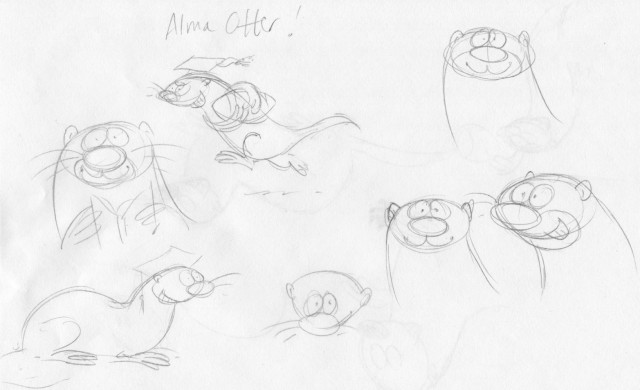
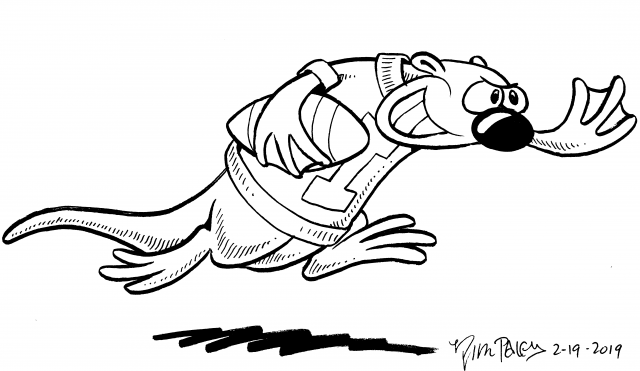



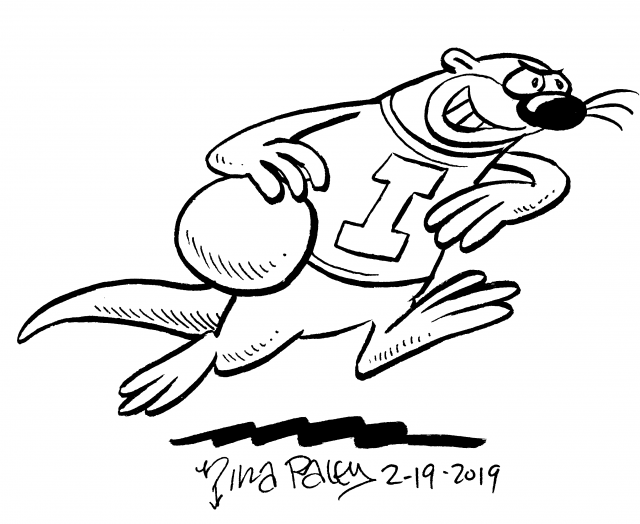
OMG Nekkid:

Update March 1 2019: In today’s local letters to the editor!
